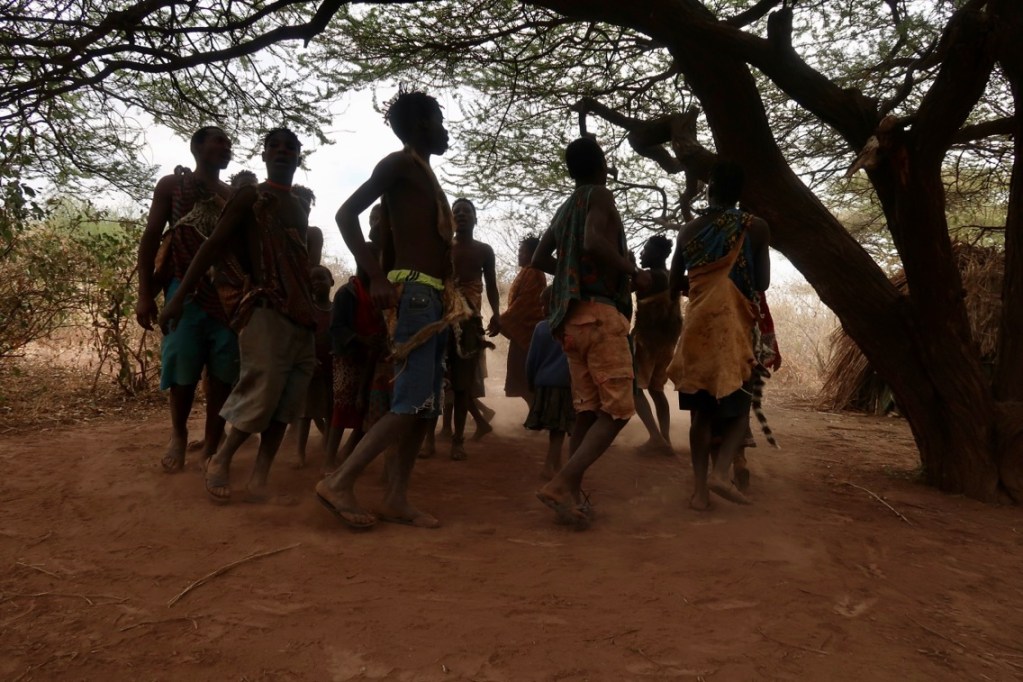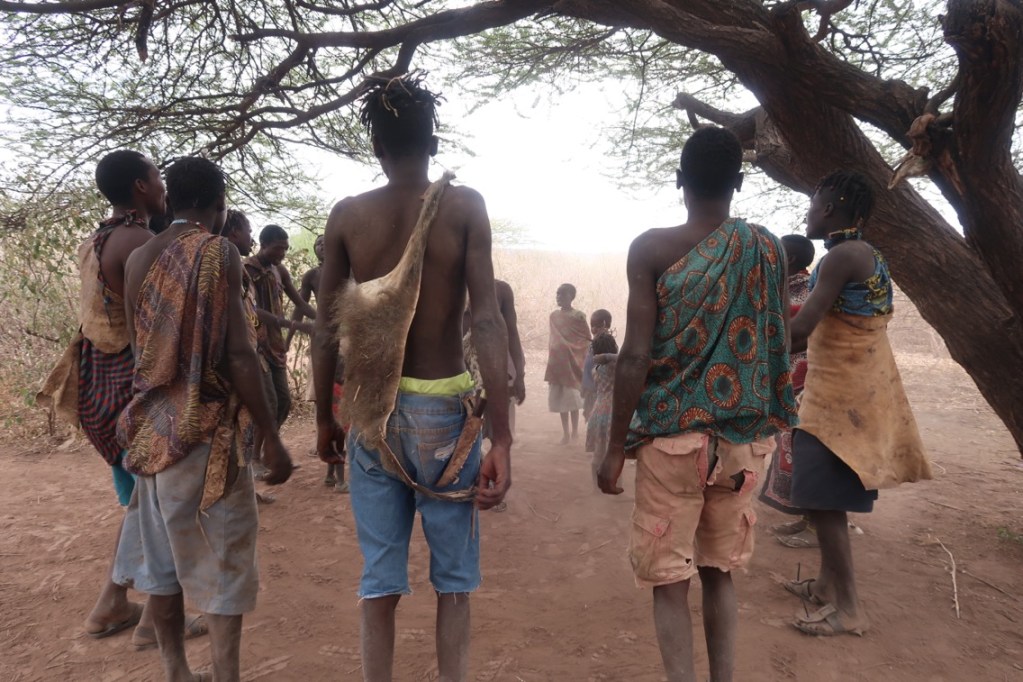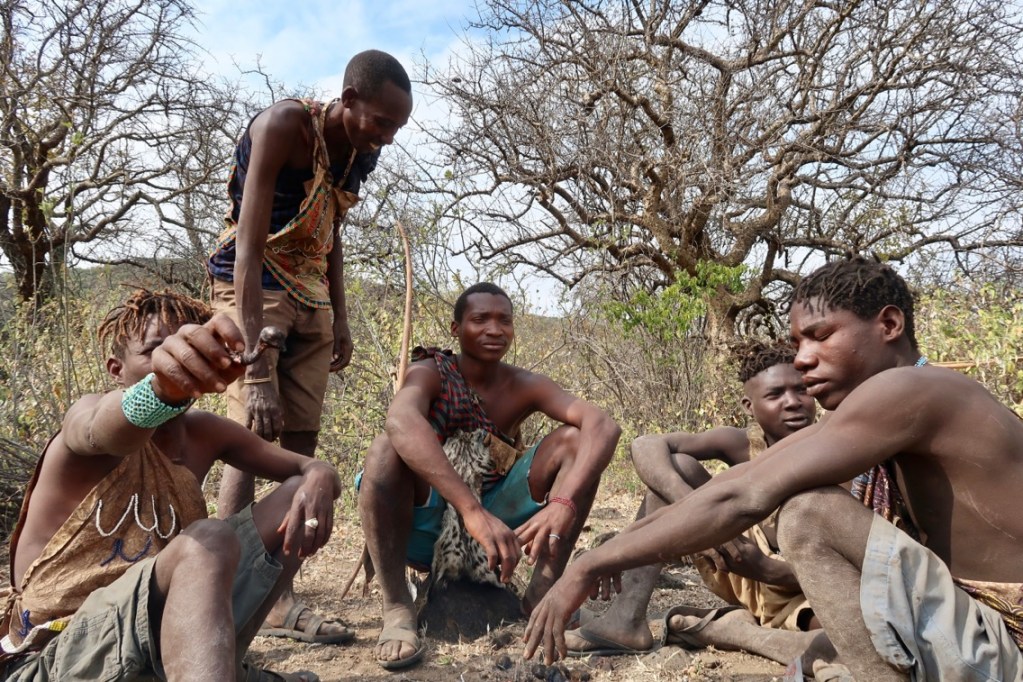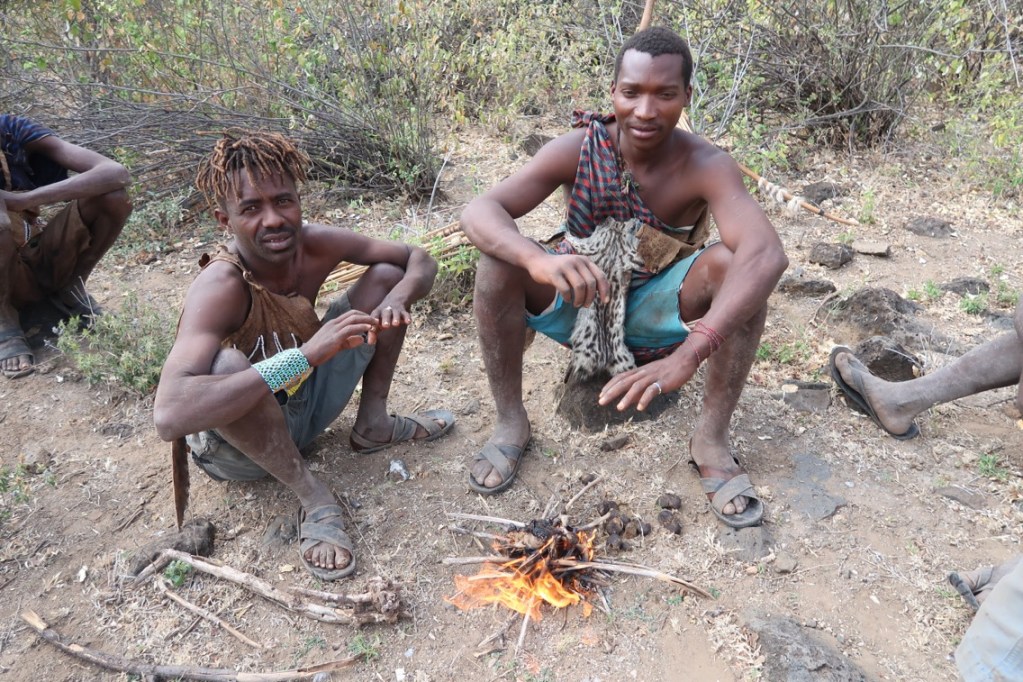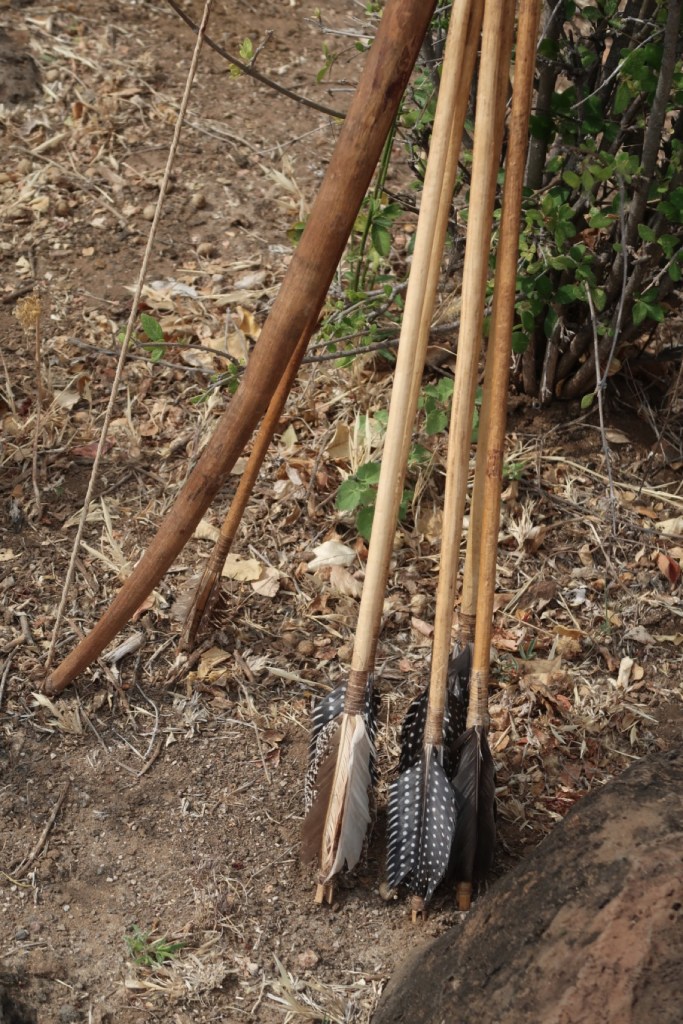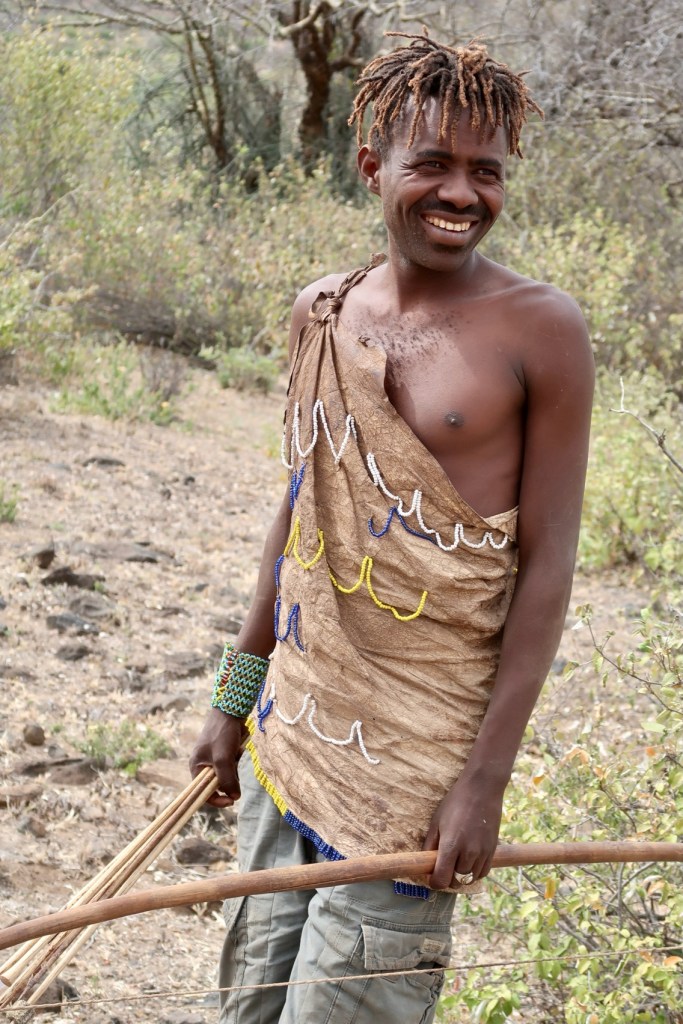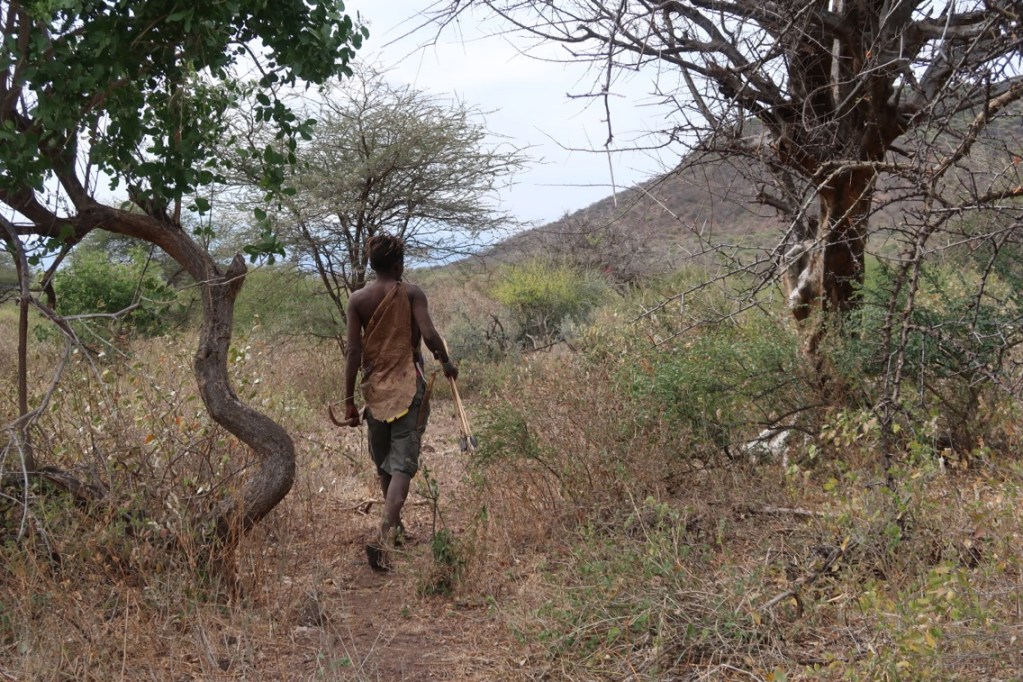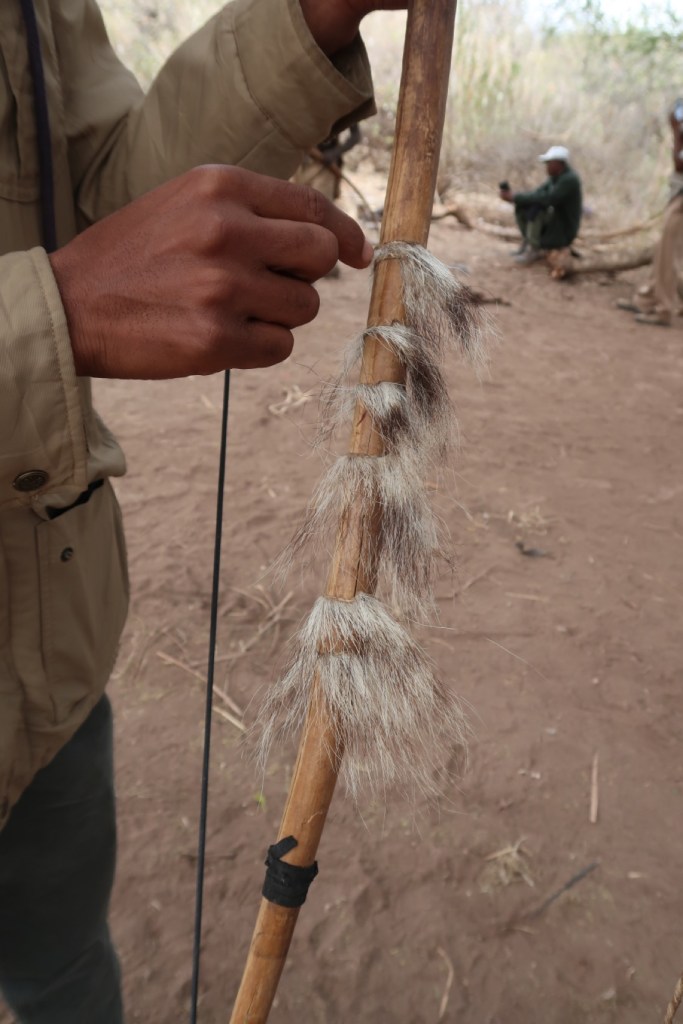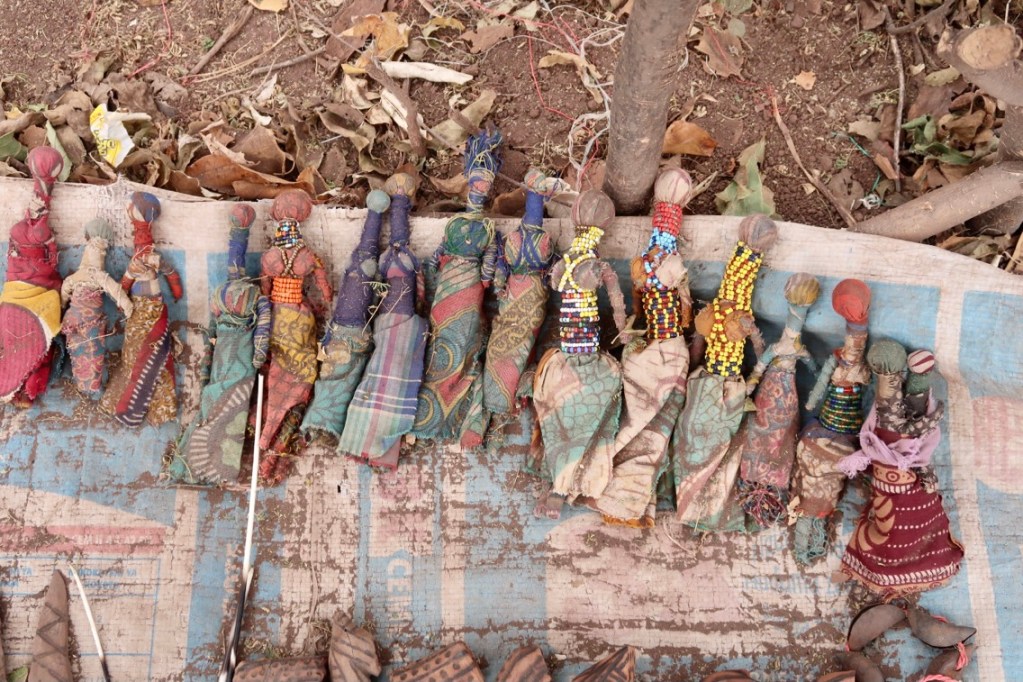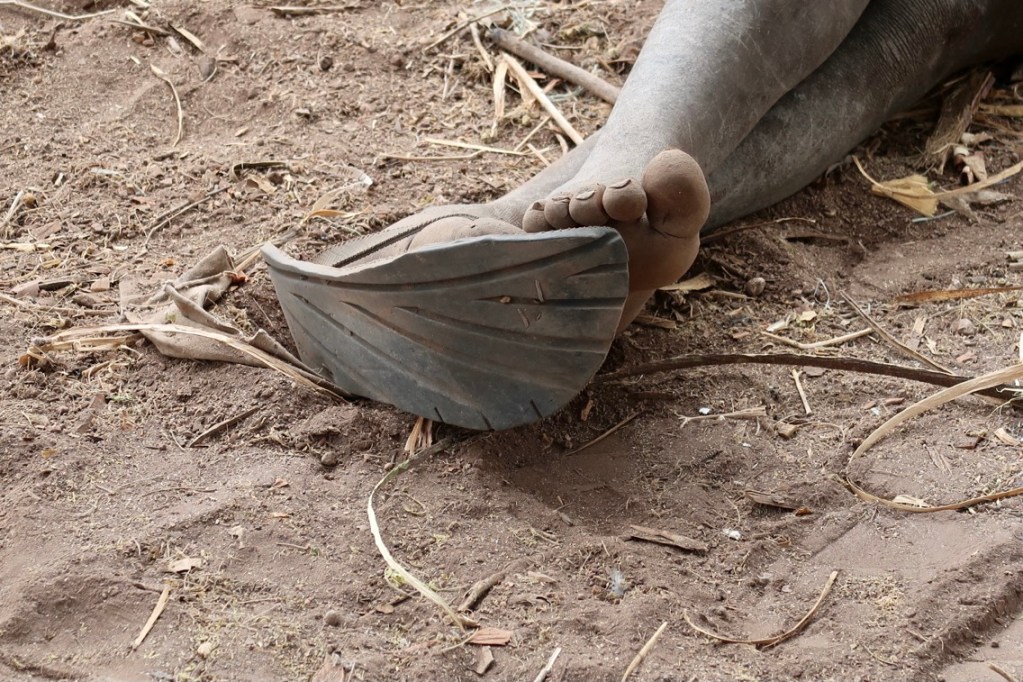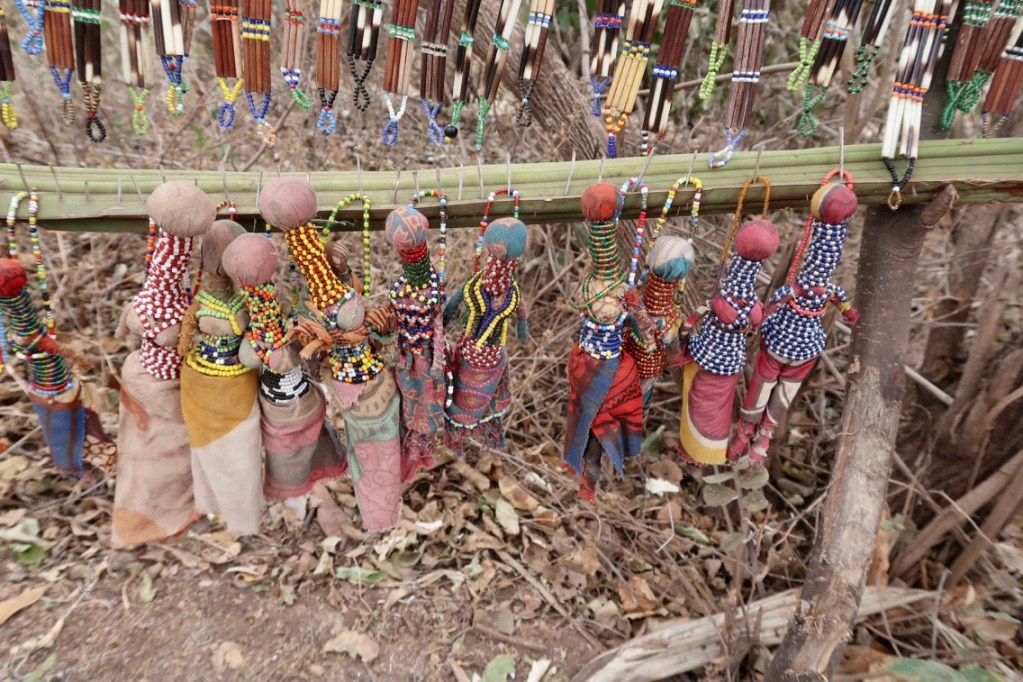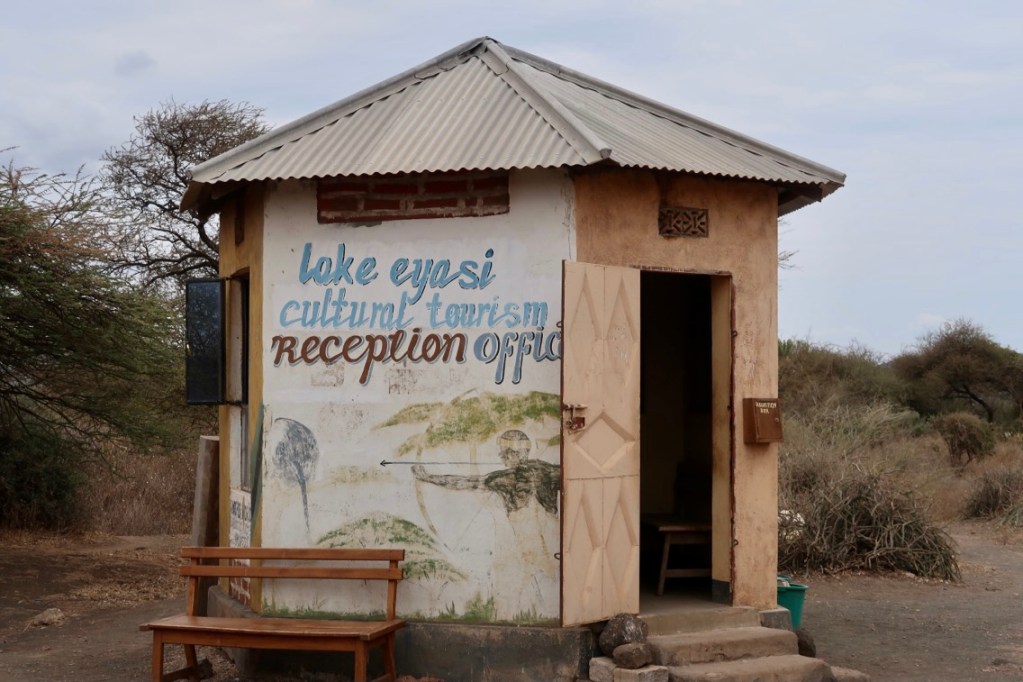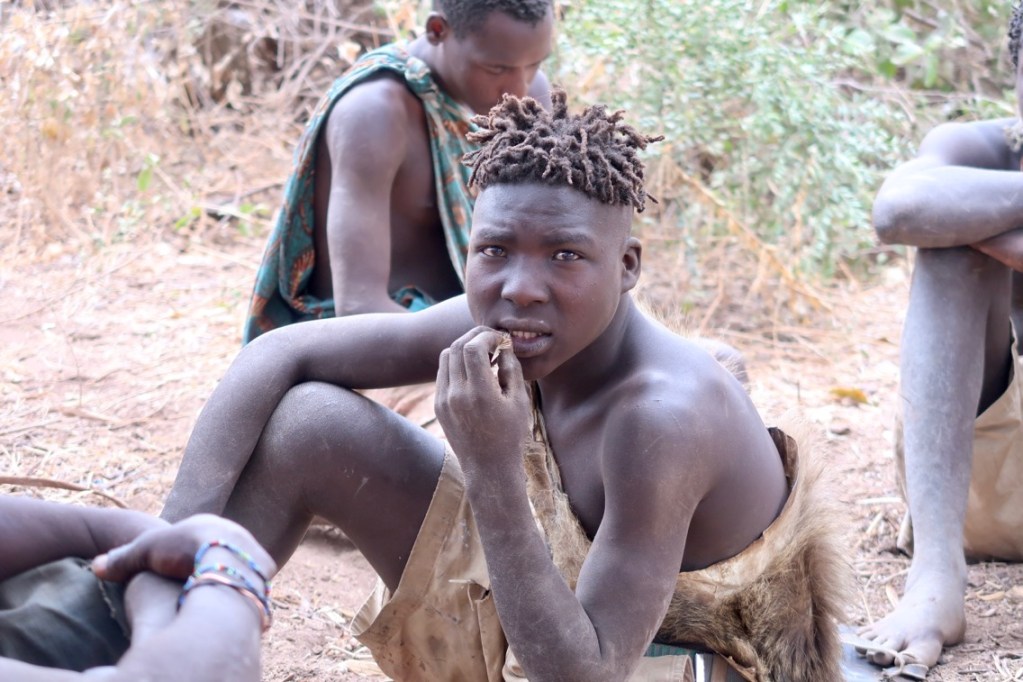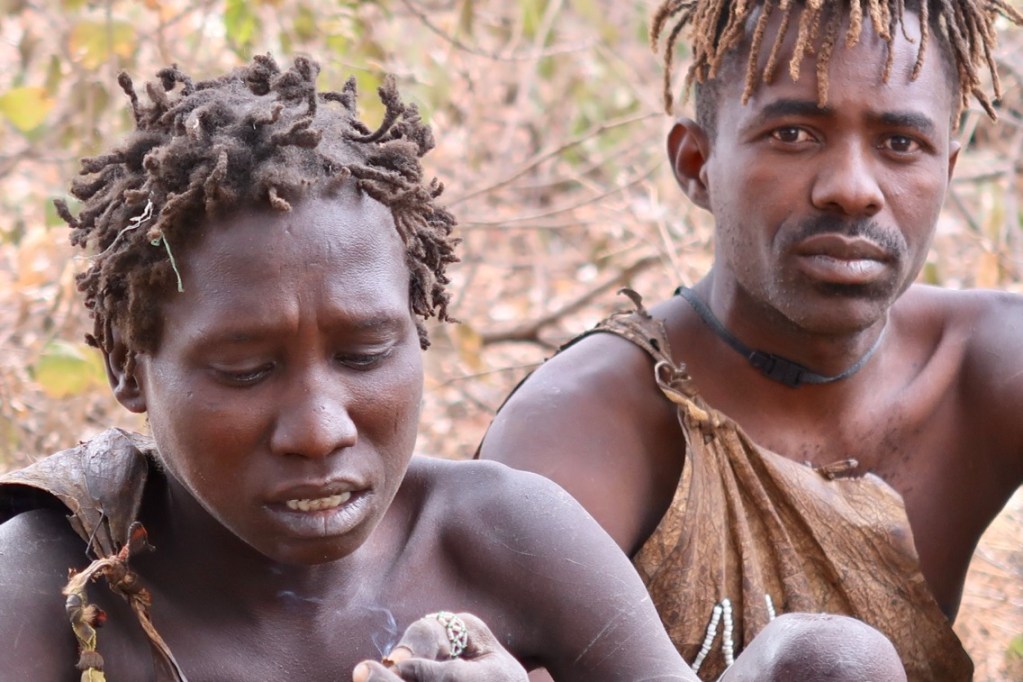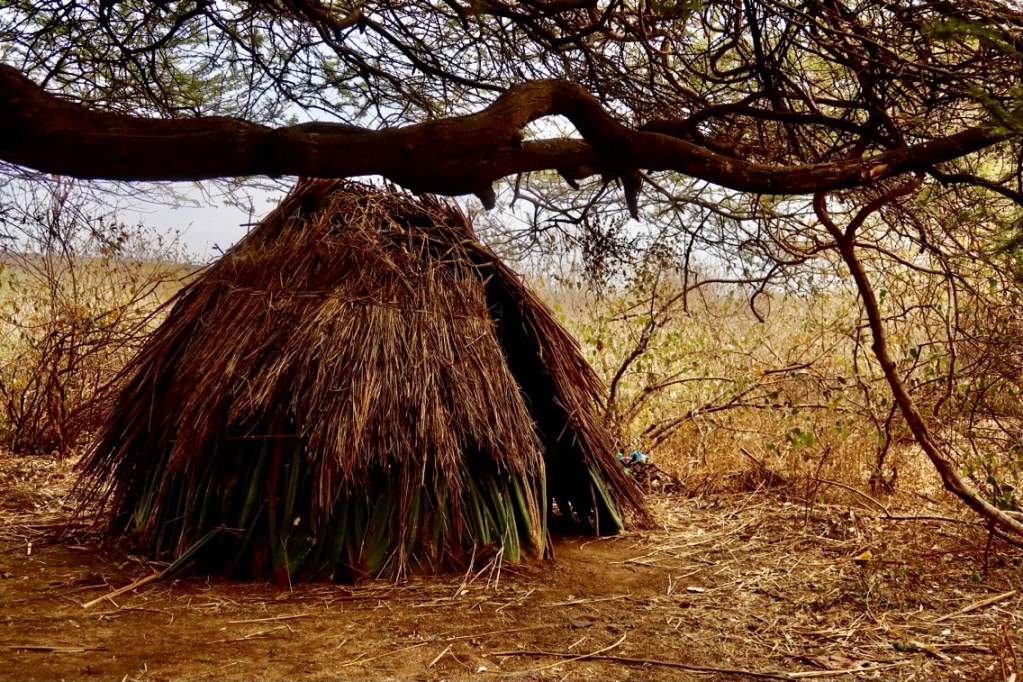The Hadzabe Bushmen Tribe, In Eyasi Lake, Tanzania

The Hadzabe Bushmen Tribe, In Eyasi Lake, Tanzania
After the Serengeti, we had to rearrange our Safari itinerary in order to free up a day to visit the Hadzabe bushmen tribe.
The tribe does not have much contact with the outside world, and their way of life has not changed much in many hundreds of years.
Joseph, a local English speaking guide, took us to visit the bushmen, introduce us to their chief, and translate for us.
Joseph is not from the bushmen tribe, but he grew up near them, and as a curious kid, he used to hang out with them, learning to hunt with a bow and arrows.
This is how he learned to speak their language.
They speak in a “click” language, clicking their tongues to emphasize greetings and phrases.
They do not speak Swahili, but can communicate with their neighbors, the Datoga tribe, who also do not speak Swahili.
They don’t like to be called bushmen, preferring to be called by the name of their tribe, Hadzabe.
We left the car behind and walked into the Hadzabe camp.
The Hadzabe are nomadic people and do not build permanent villages or mud huts.
They move in search of food.
They are hunters and gatherers and eat only what they find, hunt or gather.
They keep no animals and grow no crops of any kind.
In the dry season, they live on the plains.
They move to the highlands or the mountains in the wet season, when the plains are often flooded.
In the highlands, they live in caves where they can build fires and cook what they hunt.
Under the shade of some tall trees, the men of the tribe were lounging around.
Their only clothing is a pair of shorts and some kind of animal fur decorating their chests.
Some had the fur of a baboon, a wild cat, a mongoose, a serval cat (the fiercest hunters in the cat world), Dik Dik, or any animal they had recently hunted.
The women sat under the shade of other tall trees, with the kids.
The men seemed relaxed, almost too relaxed.
We were told that they love the sweet smoke of Marijuana, which is not legal in Tanzania but is very often used.
The simple huts that we saw were not made from wood and mud, but were constructed from local agave plants.
Surprisingly, they seemed sturdy enough to provide shelter at night.
We lazied with the tribe, asking questions and looking around.
We looked at their bows and arrows, made from wood with animal tendons for bowstrings.
The arrows are one of the only things they trade for, with their neighbors the Datoga tribe, who are skilled blacksmiths.
Then Joseph suggested that the Hadzabe demonstrate to us their hunting skills.
Some of the men got up and collected their weapons.
The dogs got ready for action.
They went into the bush, barefoot and with their spears, bows and arrows.
They separated and walked in a parallel line, combing the bush for animals.
We could hardly keep up with their fast pace, as they moved between very thorny bushes.
Back in the camp, I noticed that many of the men wore only one of their handmade shoes, made of old car tires.
But here in the bush, it was as if their feet were made of an old tire, impervious to the big thorns we had to carefully tread around.
They treated the bush in the same way we treat the refrigerator.
They went out expecting to find a snack or something to eat, and it always manifested for them.
Within a few minutes, one of them sent an arrow through a bush pigeon and we all gathered to see them prepare it.
They cut a piece of wood from a low acacia tree.
This stick of wood was carved to make a small hole, that fit the back of one of their arrows.
As they twirled the arrow into the stick to build a fire, they sang for encouragement.
“Strong Strong, I am strong!” They sang as the wood sparked and they quickly fanned the spark into a fire.
The hunter cleaned the pigeon of its feathers and placed it directly on the fire.
Within minutes it was deemed cooked, looking bloody and raw to my eyes.
They offered Jules the choice part, the head of the Pigeon.
We explained that we came from a tribe that does not eat meat.
They snorted and said that we eat food that is only fit for cows, goats and rabbits.
We laughed with them as they chewed everything, even all the bones of the pigeon.
If it were a bigger animal, they would have taken it back to share with the women of the tribe, but since it was only a small pigeon, they ate it in the field.
Nobody in the Hadzabe tribe knows how many years they have (how old they are.)
There keep no records of births and deaths, nor of marriages.
There are an estimated 1300 Hadzabe people who live here, and they only marry within the tribe.
They are monogamists, marrying once and for life.
They do celebrate weddings, but no birthdays, and they have no coming of age celebrations.
They are animists believing in the gods of the river, the fire, the trees, the sun, the moon, the rain, the spirits of animals and of water.
They consume very little water, which they bring from the river to drink and to cook.
Men prefer grilling their meat, while women usually prefer cooked stews.
On our return to the camp, the men found a pod of the baobab tree.
They opened it and gave it to us to eat, saying that it is food we must like.
The pods had tart seeds which we sucked and indeed did like.
“Nubeaa” means “thank you” in their click language.
We felt very grateful to be invited to see their ways of life, and the whole village gathered to dance and sing us goodbye.
I asked if they ever wear other clothes, perhaps when it gets colder, but was told that they own nothing more than I see them wearing now.
On a closer look, their very skin is worn as a protective layer, both from the sun, the rain and the weather.
Perhaps this is how Nature has designed us all to be.
Perhaps we were never meant to wear clothes, and develop skins that are too sensitive to everything from sun to rain to snow…
The Hadzabe do some trades to get things that they need.
They trade the wild honey they find and the skins of game animals they kill with the Datoga tribe.
They get sharp arrows for hunting in exchange.
The Datoga use the animal skins to sleep on.
They make beds made of acacia wood and cover them with these animal skins to sleep on.
We were told that the Hadzabe are healthy and strong, but they do not live very long.
Fifty or sixty years old is the maximum age they reach.
Their goodbye dance and songs were very touching.
Like all natural people, their voices were sweet and harmonious.
I took it all in with tears in my eyes.
With harmony and blessings,
Tali


